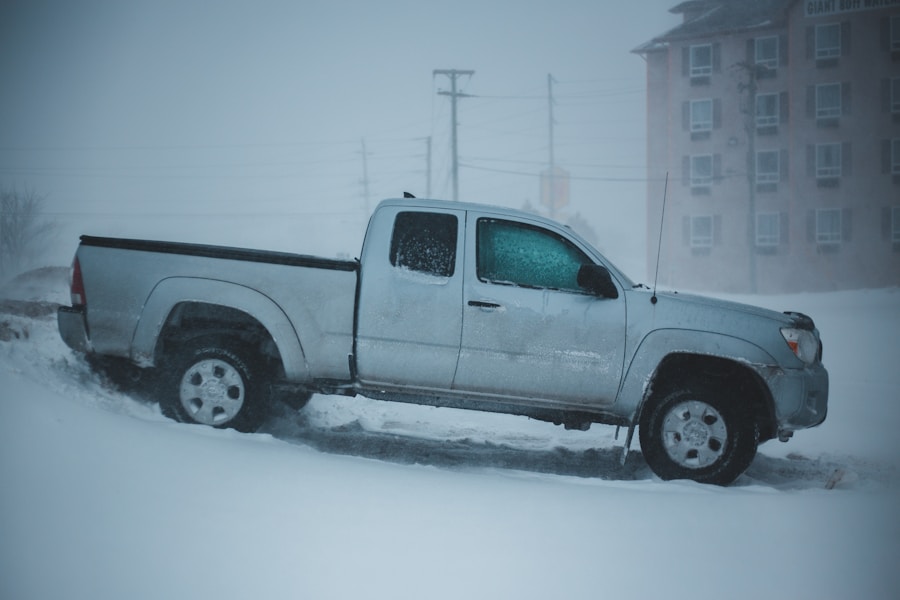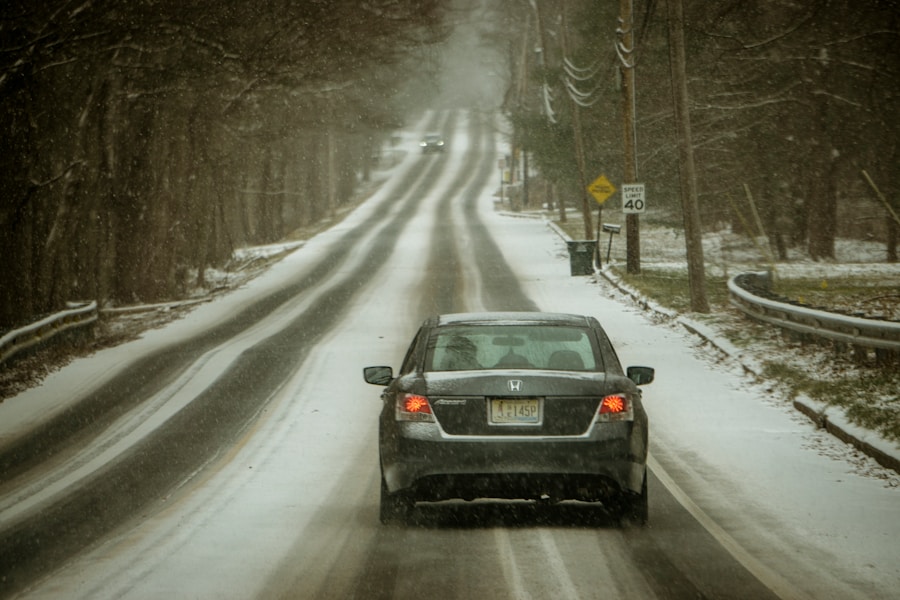Hazardous weather events encompass a wide range of atmospheric phenomena that can pose significant threats to life, property, and the environment. These events include hurricanes, tornadoes, floods, blizzards, and severe thunderstorms, each characterized by unique conditions and potential impacts. For instance, hurricanes are intense tropical storms that can bring about devastating winds, heavy rainfall, and storm surges, leading to widespread destruction along coastlines.
Tornadoes, on the other hand, are rapidly rotating columns of air that can cause localized but extreme damage, uprooting trees and demolishing buildings in mere minutes. Understanding the science behind these weather events is crucial for preparedness and response. Meteorologists utilize advanced technology such as Doppler radar and satellite imagery to track and predict hazardous weather patterns.
This data allows for early warnings and alerts, giving communities time to prepare for impending disasters. However, despite technological advancements, the unpredictability of weather remains a challenge. For example, while forecasts may predict a hurricane’s path, slight shifts in wind patterns can alter its trajectory dramatically, underscoring the importance of remaining vigilant even when conditions appear stable.
Key Takeaways
- Understanding hazardous weather events is crucial for preparing and protecting your home and assets.
- Risks and damages associated with hazardous weather can include property damage, personal injury, and financial loss.
- Standard home and auto insurance coverage may not fully protect against all types of hazardous weather events.
- Additional insurance options for hazardous weather, such as flood insurance or windstorm coverage, can provide extra protection.
- When deciding on extra insurance for hazardous weather, consider factors such as your location, property value, and likelihood of specific weather events.
Risks and Damages Associated with Hazardous Weather
The risks associated with hazardous weather events are multifaceted and can lead to both immediate and long-term consequences. One of the most pressing risks is the potential for loss of life and injury. Severe storms can result in dangerous conditions such as flooding, flying debris, and power outages, all of which can pose serious threats to individuals caught in the midst of these events.
For example, during Hurricane Katrina in 2005, thousands of residents were trapped in their homes due to rising floodwaters, leading to tragic loss of life and widespread suffering. In addition to human risks, hazardous weather can inflict substantial economic damages. The destruction of infrastructure—roads, bridges, and utilities—can disrupt daily life and commerce for extended periods.
The National Oceanic and Atmospheric Administration (NOAA) reported that the economic toll from natural disasters in the United States has been increasing over the years, with events like Hurricane Harvey in 2017 causing damages estimated at $125 billion.
Standard Home and Auto Insurance Coverage

Standard home and auto insurance policies typically provide a baseline level of protection against various risks, including some forms of hazardous weather. Homeowners insurance generally covers damages caused by windstorms, hail, and fire, which can be associated with severe weather events. For instance, if a tornado damages a roof or a hailstorm shatters windows, standard homeowners insurance would likely cover the repair costs after the deductible is met.
Similarly, auto insurance policies often include coverage for damages resulting from collisions or natural disasters like floods or falling trees. However, it is essential to recognize the limitations of standard coverage. Many policies exclude specific types of damage related to certain hazardous weather events.
For example, flood damage is typically not covered under standard homeowners insurance; instead, homeowners must purchase separate flood insurance through the National Flood Insurance Program (NFIP) or private insurers. Similarly, while comprehensive auto insurance may cover vehicle damage from flooding or hail, it is not a given that all policies will include such protections. Understanding these nuances is vital for policyholders to ensure they have adequate coverage in place.
Additional Insurance Options for Hazardous Weather
| Insurance Provider | Additional Options | Coverage Details |
|---|---|---|
| XYZ Insurance | Hurricane Coverage | Provides coverage for damage caused by hurricanes, including wind and water damage. |
| ABC Insurance | Tornado Coverage | Covers damage caused by tornadoes, including structural damage and personal property loss. |
| 123 Insurance | Flood Insurance | Offers protection against damage caused by flooding, including water damage to buildings and belongings. |
Given the limitations of standard insurance policies regarding hazardous weather events, many individuals opt for additional insurance options to enhance their protection. One common choice is flood insurance, which provides coverage for damages caused by rising water levels. This type of insurance is particularly important for homeowners in flood-prone areas or regions with a history of heavy rainfall.
The NFIP offers flood insurance policies that can help mitigate financial losses from flooding incidents. Another option is supplemental windstorm insurance, which can be crucial in areas susceptible to hurricanes or tornadoes. This type of policy specifically covers damages caused by high winds that may not be fully addressed by standard homeowners insurance.
Additionally, some insurers offer specialized coverage for other weather-related risks such as hail damage or landslides.
Factors to Consider When Deciding on Extra Insurance
When contemplating whether to invest in extra insurance for hazardous weather events, several factors should be taken into account. One primary consideration is geographic location. Individuals living in areas frequently affected by hurricanes or tornadoes may find it prudent to secure additional coverage tailored to those specific risks.
For example, residents in coastal regions often face unique challenges related to storm surges and flooding that necessitate specialized insurance options. Another critical factor is the value of personal property and assets. Homeowners with significant investments in their properties—such as high-value homes or extensive personal belongings—may benefit from additional coverage to protect against potential losses.
Evaluating the cost of potential damages versus the cost of additional premiums can help individuals make informed decisions about their insurance needs. Furthermore, understanding local building codes and regulations can also influence insurance choices; properties built to higher standards may withstand hazardous weather better than older structures.
Cost and Benefits of Extra Insurance for Hazardous Weather

The cost of additional insurance for hazardous weather varies widely based on several factors including location, property value, and the specific types of coverage sought. Premiums for flood insurance can be particularly high in areas designated as high-risk flood zones due to the increased likelihood of claims. However, these costs must be weighed against the potential financial devastation that could result from a significant weather event without adequate coverage.
The benefits of securing extra insurance extend beyond mere financial protection; they also provide peace of mind during storm seasons. Knowing that one’s home and belongings are safeguarded against unpredictable weather can alleviate stress and allow individuals to focus on preparedness rather than worry. Moreover, having comprehensive coverage can expedite recovery efforts after a disaster strikes; policyholders with adequate insurance are often able to rebuild or repair more quickly than those without sufficient protection.
Tips for Navigating Hazardous Weather with or without Extra Insurance
Navigating hazardous weather requires proactive planning and preparation regardless of one’s insurance status. Individuals should stay informed about local weather forecasts and alerts through reliable sources such as the National Weather Service or local news outlets. Creating an emergency plan that includes evacuation routes and communication strategies is essential for ensuring safety during severe weather events.
For those without extra insurance coverage, it becomes even more critical to take preventive measures to minimize potential damages. Simple actions such as securing outdoor furniture during storms or installing storm shutters can help protect homes from wind damage. Additionally, maintaining an emergency fund can provide financial flexibility in case unexpected repairs are needed after a hazardous event occurs.
For those who have opted for additional insurance coverage, it is equally important to keep documentation up-to-date. Regularly reviewing policy details ensures that coverage remains adequate as property values change or as new risks emerge. Taking inventory of personal belongings through photographs or lists can also facilitate smoother claims processes should damage occur.
Making Informed Decisions for Protecting Against Hazardous Weather
In an era where climate change is increasingly influencing weather patterns and intensifying storms, understanding hazardous weather events and their associated risks has never been more critical. By recognizing the limitations of standard home and auto insurance coverage and exploring additional options tailored to specific hazards, individuals can make informed decisions about their protection strategies. Whether through enhanced policies or proactive preparedness measures, taking steps to safeguard against hazardous weather is essential for ensuring safety and financial stability in an unpredictable world.
If you are wondering whether you need extra insurance for driving in hazardous weather conditions, you may want to check out this article on fairshotfinancial.xyz. This article provides valuable information on the different types of auto insurance coverage available and how they can protect you in various situations, including driving in hazardous weather. It is important to be prepared for any situation on the road, and having the right insurance coverage can give you peace of mind while driving in challenging conditions.
FAQs
What is hazardous weather conditions?
Hazardous weather conditions refer to any weather situation that poses a threat to drivers on the road, such as heavy rain, snow, ice, fog, or high winds.
Do I need extra insurance for driving in hazardous weather conditions?
Most standard auto insurance policies provide coverage for driving in hazardous weather conditions. However, it’s important to review your policy to understand the extent of coverage for weather-related incidents.
What types of coverage are typically included in standard auto insurance for hazardous weather conditions?
Standard auto insurance policies typically include coverage for damage to your vehicle caused by weather-related incidents, such as hail damage or flooding. Additionally, liability coverage can protect you if you are at fault in an accident caused by hazardous weather conditions.
Are there any additional insurance options for driving in hazardous weather conditions?
Some insurance companies offer optional coverage, such as comprehensive coverage, which can provide additional protection for weather-related damage to your vehicle, such as damage from falling trees or debris.
What steps can I take to prepare for driving in hazardous weather conditions?
Before driving in hazardous weather conditions, it’s important to check your tire tread, windshield wipers, and fluid levels to ensure your vehicle is prepared for the conditions. Additionally, it’s important to drive cautiously and be aware of changing road conditions.


